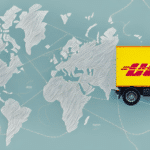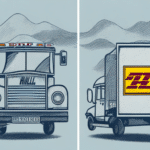What Does 'Direct Signature Required' Mean?
Every time we order a package, we are presented with various shipping options. One of the most popular options is "Direct Signature Required." However, not everyone understands what it means or how it works. In this article, we will delve into various aspects of Direct Signature Required, covering its benefits, drawbacks, legal considerations, and much more.
Understanding the Basics of Signature Required Delivery
Direct Signature Required is a delivery service offered by shipping carriers such as UPS, FedEx, and DHL. With this option, the carrier will only deliver the package to the recipient's address if someone is present to sign for it. The carrier will make up to three delivery attempts, and if none are successful, the package will be returned to the sender.
It is important to note that Direct Signature Required is not the same as Adult Signature Required. The latter option requires the recipient to be at least 21 years old and show a valid ID to receive the package. Direct Signature Required, on the other hand, only requires someone to be present to sign for the package, regardless of their age. This service is often used for valuable or sensitive items that require extra security during delivery.
Benefits and Drawbacks of Direct Signature Required
Benefits
- Increased Security: Ensures that the package is received only by the intended recipient or someone authorized by them, preventing theft, loss, or damage.
- Peace of Mind: Both sender and recipient can track the package and know who received it.
- Ideal for High-Value Items: Useful for shipping expensive jewelry, confidential documents, or other sensitive items that require extra protection.
Drawbacks
- Inconvenience: Requires someone to be present to sign for the package, which can disrupt daily routines.
- Potential Delays: Missing delivery attempts may result in the need to reschedule or retrieve the package, adding time to the delivery process.
- Additional Costs: Often comes with higher shipping fees compared to standard delivery options.
How to Determine if Your Shipment Requires Direct Signature
To determine whether a package requires Direct Signature Required, you can:
- Check the tracking information provided by your shipping carrier.
- Contact the sender directly.
- Reach out to the carrier's customer service.
Some carriers may automatically require Direct Signature for certain types of packages, such as high-value items or hazardous materials. Additionally, some shippers may opt for this requirement to enhance security. Always confirm with the carrier or shipper to ensure you are aware of any special requirements for your shipment.
The Different Types of Signature Requirements for Deliveries
There are various types of signature requirements for deliveries. Three of the most common options are:
- Direct Signature Required: Requires the recipient or someone authorized by the recipient to sign for the package.
- Indirect Signature Required: Allows packages to be left without a signature as long as someone is available to receive it at the delivery address.
- No Signature Required: The package can be left at the delivery address without a signature, even if no one is present.
The type of signature requirement may vary depending on the contents of the package and the delivery location. For example, packages containing valuable or sensitive items may require a direct signature, while packages delivered to a business may have an indirect signature requirement to ensure timely delivery. Additionally, some delivery services may offer additional signature options, such as adult signature required for packages containing alcohol or tobacco products.
The Impact of Direct Signature Required on Your Shipping Costs
Direct Signature Required can increase your shipping costs as it requires additional handling and extra efforts from the carrier. The exact cost varies depending on the carrier, the weight and size of the package, and the destination. However, the increased security and peace of mind may be worth the extra cost, especially for valuable or sensitive packages.
Some carriers may offer discounts or waivers for Direct Signature Required services for certain types of shipments, such as those sent by businesses or for medical purposes. It is worth checking with your carrier to see if you qualify for any discounts or waivers.
Additionally, Direct Signature Required can impact the delivery time of your package. As the carrier needs to obtain a signature from the recipient, it may take longer for the package to be delivered. This is especially true if the recipient is not available at the time of delivery and needs to reschedule. It is important to factor in this potential delay when choosing whether or not to use Direct Signature Required for your shipment.
How to Ensure Safe and Secure Delivery with Direct Signature Required
Here are some tips to ensure safe and secure delivery if you opt for Direct Signature Required:
- Provide Accurate Delivery Information: Include a phone number, email address, or specific delivery instructions.
- Availability: Make sure someone is available to receive the package at the scheduled delivery time.
- Authorize Someone Else: If you can't be available, consider authorizing someone else to receive the package on your behalf.
- Track Your Package: Regularly monitor the delivery status through the carrier's tracking system.
Additionally, choose a reliable and trustworthy delivery service by researching and reading reviews to ensure they have a good track record of delivering packages safely and on time. Investing in package insurance can also protect your shipment in case of loss or damage during transit. Many delivery services offer insurance options for an additional fee, so be sure to inquire about this when scheduling your delivery.
The Role of Technology in Direct Signature Required Deliveries
Technology plays an increasingly significant role in Direct Signature Required deliveries. Innovations include:
- IoT Devices: Smart locks and cameras can help ensure secure access to the delivery location.
- Mobile Apps: Some carriers provide apps that notify recipients of the package's arrival, allow them to reschedule delivery, or redirect the package to a more convenient location.
- Electronic Signatures: Streamline the signing process and reduce the need for physical paperwork.
These technologies enhance the efficiency and security of the delivery process, making Direct Signature Required more convenient and reliable for both senders and recipients.
Common Misconceptions about Direct Signature Required
There are several misconceptions about Direct Signature Required. Two of the most common ones are:
- It Can Only Be Delivered to the Recipient: False. The carrier can deliver it to an authorized recipient or a neighbor as long as they provide signature confirmation.
- It Applies to All Packages: False. Direct Signature Required is typically only required for valuable, fragile, or sensitive packages.
Another common misconception is that it is an unnecessary expense. However, the added security and peace of mind it provides can be invaluable, especially for high-value items. Additionally, Direct Signature Required may not be available for all shipping methods or destinations. Always check with the carrier or shipping provider to confirm if this option is available and applicable to your specific shipment.
What Happens if You Miss a Direct Signature Required Delivery?
If you miss the Direct Signature Required delivery attempts, you may need to:
- Reschedule Delivery: Contact the carrier to schedule a new delivery time.
- Arrange for Pickup: Pick up the package at a designated location.
- Package Redirection: Some carriers offer redirection to a more convenient location for an additional fee.
If no action is taken, the package may be returned to the sender after a certain period. Additionally, some carriers may require a signature from someone over the age of 18, so ensure that an eligible person is available to sign for the package during the delivery window.
Tips for Receiving Packages with a Direct Signature Requirement
Here are some tips for receiving packages with a Direct Signature Requirement:
- Inspect the Package: Check for any damage or signs of tampering before signing for it.
- Verify Contents: If you are uncertain about the package's contents or delivery, do not sign for it.
- Report Issues: Immediately report any concerns or problems to the carrier.
If you are not available to sign for the package, you can usually:
- Request a hold for pickup.
- Reschedule the delivery for a more convenient time.
- Use electronic signature options available through the carrier's website or mobile app.
Be sure to check with your carrier for their specific policies and procedures regarding Direct Signature Requirements.
The Future of Direct Signature Required Deliveries in the E-commerce Industry
The e-commerce industry is witnessing rapid growth, with more consumers opting to shop online. This has resulted in increased demand for shipping services and a greater emphasis on secure and reliable delivery options. Direct Signature Required is likely to remain a popular delivery option, but carriers may explore new technologies and delivery models to make it more convenient and cost-effective.
Emerging trends include the integration of artificial intelligence to optimize delivery routes, the use of autonomous delivery vehicles, and enhanced real-time tracking systems. These advancements aim to improve the efficiency and reliability of Direct Signature Required deliveries, ensuring that packages reach their destinations securely and promptly.
Alternatives to Direct Signature Required for Package Deliveries
There are several alternatives to Direct Signature Required for package deliveries, including:
- Indirect Signature Required: Allows the package to be left without a signature as long as someone is available to receive it at the delivery address.
- No Signature Required: The package can be left at the delivery address without a signature, even if no one is present.
- In-Store Pickup: The recipient can collect the package from a designated pickup location, such as the carrier's retail store or a partner location.
Each alternative offers different levels of security and convenience, allowing senders and recipients to choose the option that best meets their needs based on the package's value, urgency, and required security.
Legal Considerations for Using Direct Signature Required for Deliveries
Using Direct Signature Required for deliveries requires careful consideration of legal regulations and requirements. In the United States, the Federal Trade Commission and the Electronic Signatures in Global and National Commerce Act (E-SIGN) mandate the use of electronic signatures, including digital and scanned signatures, to be legally binding.
Additionally, some states may have specific laws regarding delivery signature requirements, and carriers may have their own policies and guidelines. It is essential to:
- Understand federal and state regulations related to electronic signatures and delivery requirements.
- Ensure compliance with carrier-specific policies and procedures.
- Maintain proper documentation of electronic signatures to uphold their legal validity.
In conclusion, Direct Signature Required is a delivery option that provides increased security and peace of mind but may also be inconvenient and costly. Before choosing this option, consider various factors such as the package's value and sensitivity, the recipient's availability and location, and the legal and regulatory requirements. With the right planning and preparation, you can ensure safe, secure, and stress-free package delivery.






















